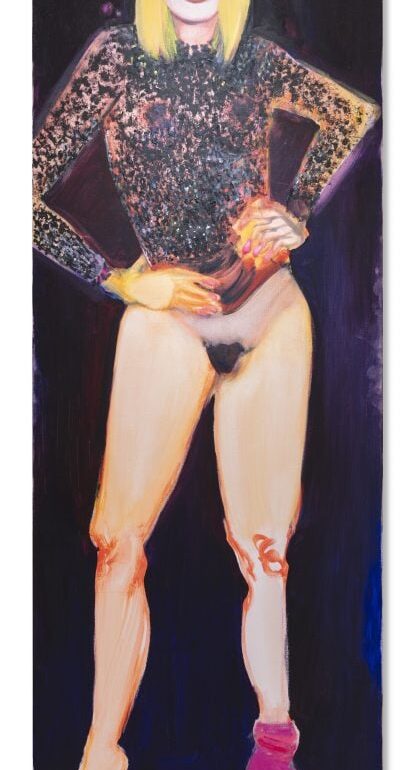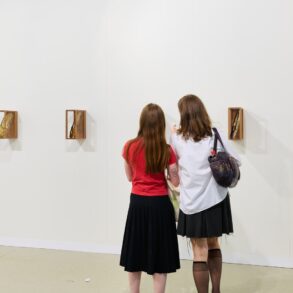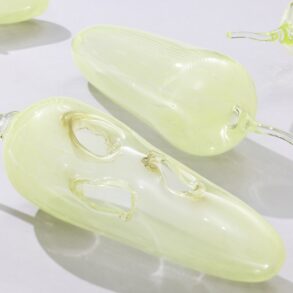Just one lot stole the show during an otherwise unremarkable sale of 21st-century art at Christie’s New York last night. Speculation had been swirling around Miss January (1997) by the 71-year-old South African painter Marlene Dumas in the weeks leading up to the sale. With its hefty estimate of $12 million to $18 million, was it going to make history by becoming the most expensive artwork by a living woman artist?
The painting succeeded in meeting expectations, but only just, fetching a hammer price of $11.5 million, or $13.6 million with premium. This figure comfortably edged the previous record of $12.4 million set by Jenny Saville at Sotheby’s London in 2018, although inflation no doubt had a part to play.
Though Dumas has not quite reached the household name status of some of her top-selling female peers like Yayoi Kusama, Cindy Sherman, and Bridget Riley, she was no less of a shoo-in to claim top spot. Back in 2004, the sale of Jule, die Vrou (1985) for $1.2 million at Christie’s New York landed Dumas in a then-highly exclusive club of women whose artworks had sold for over $1 million. She was only its the third member.
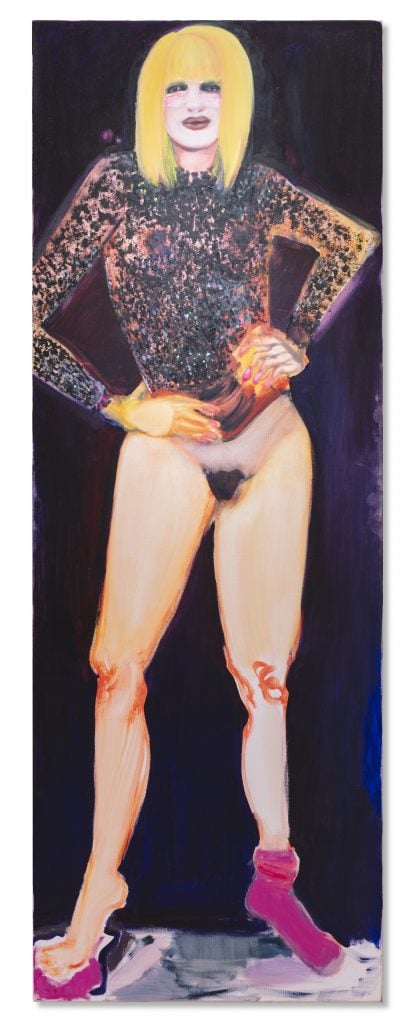
Marlene Dumas, Miss January (1997). Courtesy Christie’s Images Ltd. 2025.
Until yesterday, her auction record was $6.3 million, set in 2008, although this figure had been trumped in private sales of the artist’s work. At Art Basel Miami Beach in 2023, David Zwirner reported that it had sold The Schoolboys (1986–87) for $9 million. Her market has tended to remain stable over the years, with her experienced galleries safely keeping her work out of the hands of flippers.
So who is this elusive art market star? Dumas has kept audiences captivated since the 1980s for work that continues to surprise, lulling and then repelling us with its capacity to be variously charming, provocative, haunting, or gut-wrenching.
While many of her paintings appear to be portraits, they might more accurately be understood as studies of various human states. With these faces and her nude studies, the loose, liquid, and heavily gestural movement of paint on canvas and paper emphasizes the subject’s emotional life, vulnerability, and their sensuality, be they a friend, stranger, public figure, or her own child.
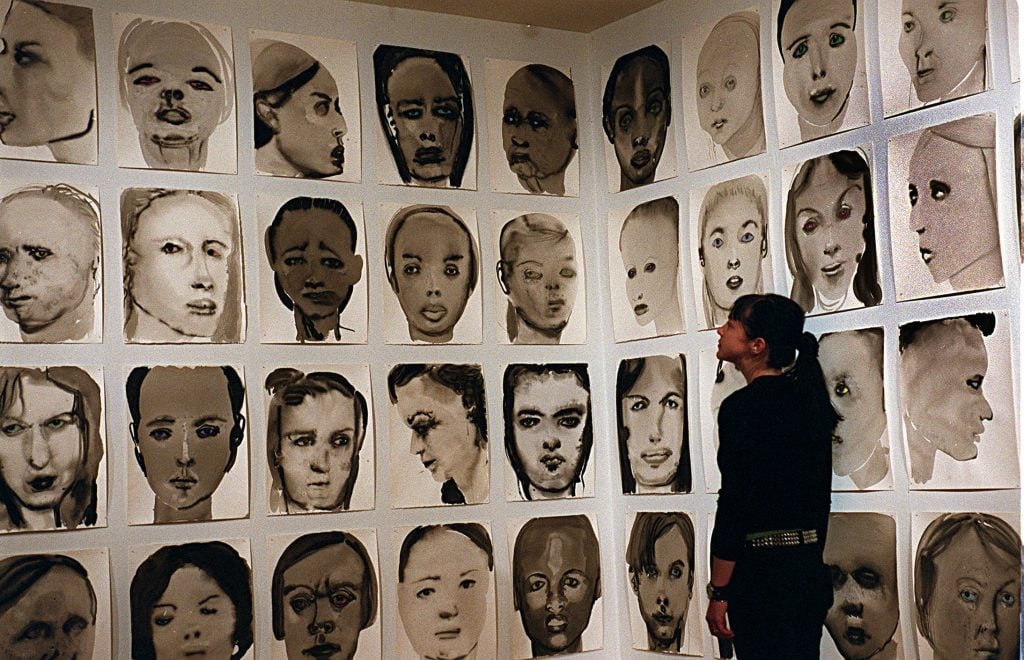
Installation of Marlene Dumas’s “Model” series from 1994 at the Institute Of Contemporary Art, Boston. Photo: David L Ryan/ The Boston Globe via Getty Images.
The series “Models,” a vast trove of black-and-write faces from 1994, is exemplary of the scope of Dumas’s interests. It includes images of psychiatric patients, as well as famous artists, actresses, and fashion models. “You have all kinds of women together,” Dumas said in an audio guide for MoMA. The sly inclusion of a hissing snake is reflective of the artist’s sense of humor. “That’s a silly joke on the fact that women were always seen as the cause for the fall, so I can’t just stay serious all the time.”
Born in Cape Town in 1953 to an Afrikaans family, Dumas has lived in Amsterdam for four decades. She settled here in the 1970s to follow up her art degree from the University of Cape Town with a psychology degree from the University of Amsterdam. Having grown up witnessing Apartheid and later starting life as an outsider in a new country, Dumas’s work has never shied from provocative, serious, or dark topics like race, gender, and sexuality.

Marlene Dumas, The Wall (2009). Photo: Universal History Archive / Universal Images Group via Getty Images.
Several of her most disturbing works have addressed head-on the decades-long Israeli-Palestinian conflict. In The Wall (2009), one of several paintings based on newspaper clippings, a group of Orthodox Jews are seen passing the holy Western Wall in Jerusalem to pray at Rachel’s Tomb in Bethlehem. Wall Weeping from the same year, meanwhile, is based on a photograph of IDF soldiers forcibly searching Palestinian men against a wall, but opens up their raised hands gesture to new interpretations, including that they are in an act of prayer of searching. The 2002 series “Blindfolded” contains 20 drawings of blindfolded Palestinian men, while Dead Girl, from the same year, shows the slack, bloodied head of a Palestinian girl murdered by gunshot.
Some of her best-known paintings are odes to female pleasure or otherwise erotic but with a twist, perhaps introducing a sickly, sordid undertone to confuse and undermine the male gaze. Speaking of the more explicit examples, Dumas has described them as “more suggestion. If you would zoom in on certain aspects of detail, you would not even know what it was.” She added: “I’ve always asked myself, how do you distinguish between love and lust? Because you actually use the same poses.”
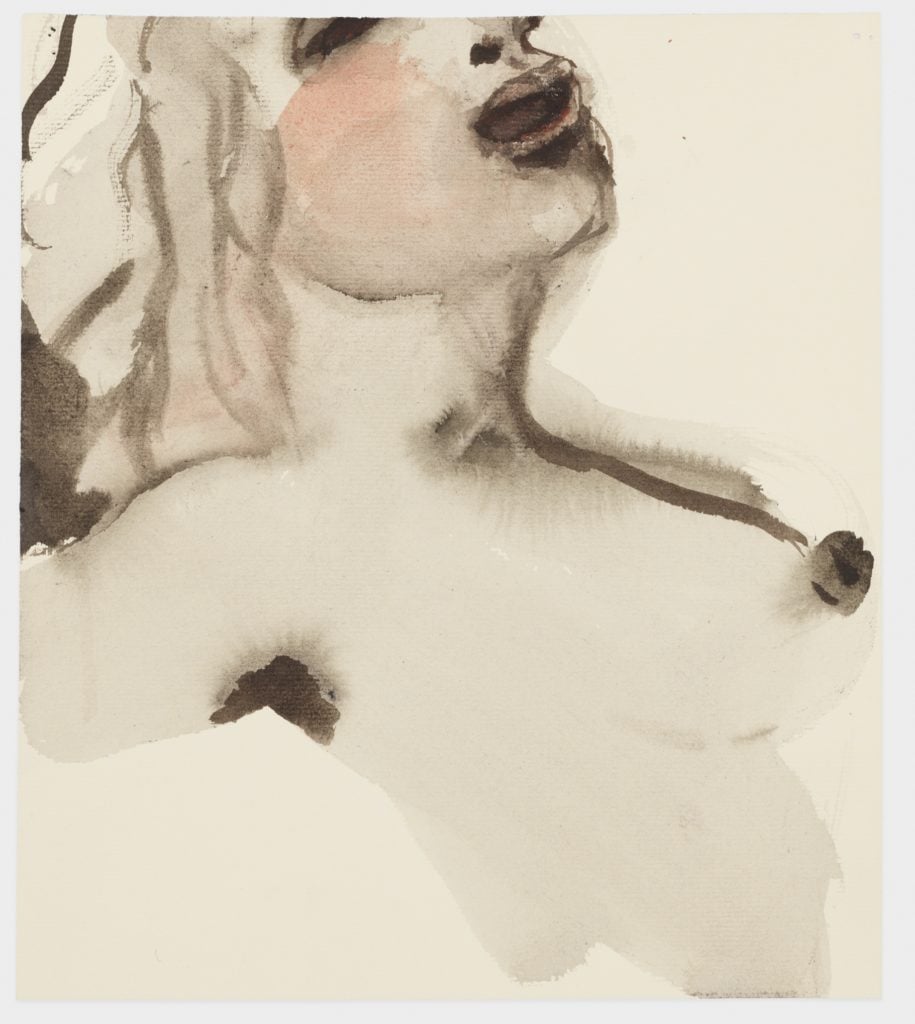
Marlene Dumas, Venus in bliss (2015-16). © Marlene Dumas. Courtesy David Zwirner, NY/Hong Kong.
Her auction record-breaker, Miss January, was inspired by a magazine centerfold of a big-breasted blonde. “This feels to me like a creature from outer space,” Dumas told W Magazine in 2008. “In art, there’s always this thing about ‘the other.’ Well, I’m a woman, but this still feels to me like some strange creature.”
“Painting is about exploring one’s fears, but also I feel that it can be beautiful somehow,” Dumas has said. Dead Marilyn (2008), for example, is a gruesome image based on an autopsy photograph of the quintessential American movie star that was published in a newspaper. No detail is spared in Dumas’s depiction of Monroe’s skin turning a mottled blue.
“One of the criteria for me often to do a work is when it scares me a bit,” Dumas said in an audio guide for MoMA. “In a sense, it is a portrait of death. But it is also a portrait of Marilyn Monroe. It is a portrait of a period. It is a portrait of one’s own potential death.”
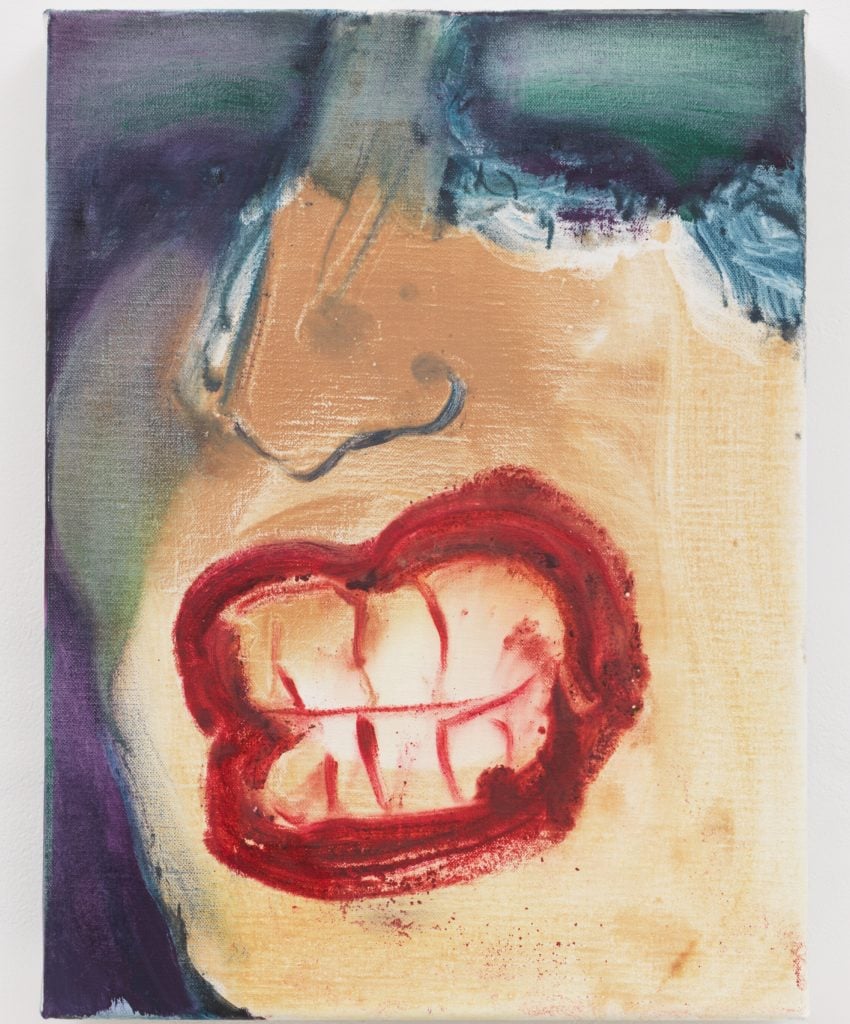
Marlene Dumas, Teeth (2018). © Marlene Dumas. Courtesy David Zwirner, NY/Hong Kong.
Though it has an undeniably contemporary feel, Dumas’s work has easily and often held its own among the historical greats. In 2021, during an exhibition of paintings inspired by the poetry of Charles Baudelaire at the Musée d’Orsay in Paris, her work was hung alongside Impressionist masters in a smaller, second exhibition titled “Conversations.” It was the first time the museum had deigned to pair the work of one of today’s artists with any of its prized masterpieces.
Other notable pairings include “Moonrise: Marlene Dumas & Edvard Munch” at the Munch Museum in Oslo and, this summer, “Cycladic Blues” at the Cycladic Museum of Art in Athens. The latter show will place her work side-by-side with ancient abstract figurines originating from the Greek Cyclades, with Dumas picking out the handful of archaeological subjects she believes resonate with her practice most strongly.
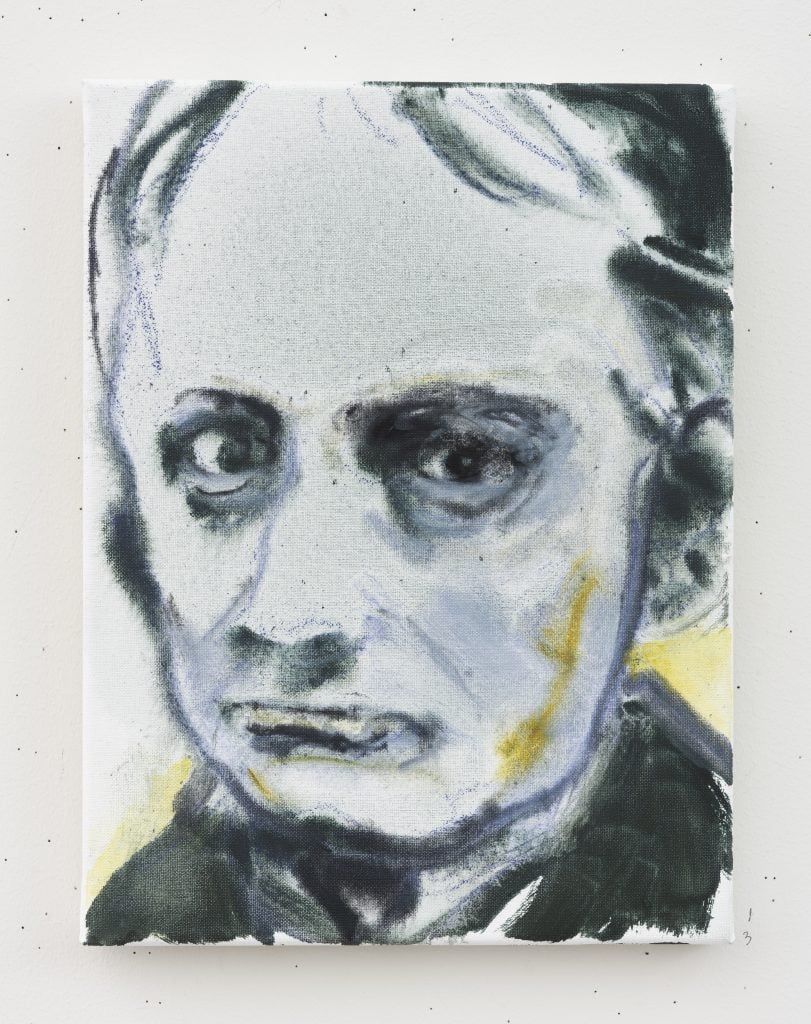
Marlene Dumas, Charles Baudelaire (2020). Photo : © Peter Cox, Eindhoven, courtesy Marlene Dumas.
Anyone bidding for their chance to own a Dumas is in good company. Her works are held at an extensive list of world-class institutions, including the Museum of Modern Art in New York, Art Institute of Chicago, the Centre Pompidou in Paris, the Fondation Beyeler and Kunstmuseum in Basel, the Los Angeles County Museum of Art, the Rijksmuseum and Stedellijk Museum in Amsterdam, and Tate in London.
Indeed, interest in the artist has remained consistent over the past two decades according to Artnet’s Price Database. Her auction sales volume peaked at around $16 million in 2017 but reached a similarly healthy $14 million in 2023, which may reflect the success of Dumas’s solo show the previous year at Palazzo Grassi in Venice. Timed to coincide with the biennale, it reasserted her already considerable prominence. However, Dumas has not been immune to a wider contracting art market, reflected in the sales volume figure of just $3 million for 2024.
This post was originally published on this site be sure to check out more of their content




